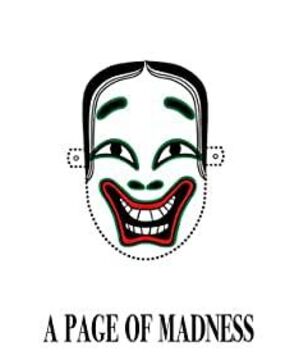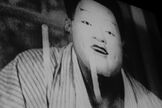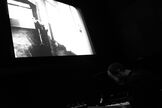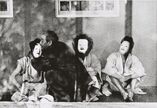At the beginning of the 20th century, Japanese drama films began to sprout. In the early stages, Japanese drama films are mostly rough. In the eyes of Japanese intellectuals, Japanese movies at that time were considered very low-end and vulgar. In order to change people's impression of movies, many filmmakers have begun to explore the art of film, and the most direct one is the imitation and reference of Japanese filmmakers to European and American film styles.
In 1919, Guishan Jiaozheng's two films, "The Glory of Life" and "Girls in the Deep Mountains", came out. After the film was released, the artistic production intentions expressed in them initially showed the artistic possibility of the film, which gave later films. The exploration of Japanese cinema at the artistic level laid the foundation. Since then, many directors have tried to explore the art of film. For example, in 1921, Koyama Uchiki's work "Soul on the Road", in 1923, Suzuki Ken's work "The World's Suffering", in 1925, Erchuan Buntaro's work "Xiong" Although these works already possess a certain artistic quality, they are still relatively rough on the whole, and the traces of imitation are more obvious. It was not until 1926, when Kinikasa Sadanosuke's "A Page of Madness" came out, that Japanese films reached the level of the world's avant-garde films.
When early Japanese films explored artistic expression, they often resorted to some foreign films. For example, Kinikasa Tsunosuke's "Crazy Page" was influenced by German Expressionism. In other words, "A Page of Madness" is the attempt and interpretation of expressionism by director Kinakasa Tsunosuke. "Crazy Page" is an enlightenment work of Japanese expressionism. The film has a strong avant-garde and experimental nature. Whether it is the film's expression or narrative techniques, it can reflect the director's skilled techniques.
Although the dynamic flashback destroys the integrity of the narrative, it gives the film more personal style. The fast-paced cutting destroys the integrity of the shot but adds to the experimental nature of the film. Coupled with the expressionist style characteristics in the film, This made the film the pinnacle of the Japanese silent film period.
Before we analyze the film "Crazy Page", let's first take a look at the development of expressionism in Germany:
Expressionism originated from painting and became the mainstream art style in the late 19th century and early 20th century, and has had a profound impact in various art fields. In 1920, German filmmakers took the lead in introducing expressionism into films. In expressionist films, the director conveyed emotions and states through actors, props, scenery, lighting, composition, environment, etc., and no longer emphasized the detail of narrative and the motivation of character behavior. cause. The advent of Robert Wein's "Dr. Caligari" officially marks the birth of German expressionist cinema.
From the beginning of the expressionist style in 1919 to the end of 1924, expressionism was only popular in the German film industry for five years. In the past five years, the expressionist style has been excavated and displayed to the greatest extent. Expressionist directors emphasize the intuitive feeling of the work, are not interested in rationality, and advocate strong colors and strong contrasts of light and dark, in order to create a pure the spiritual world.
Expressionist directors are good at penetrating the camera into the distorted, isolated, and abandoned world. They never portray reality positively, but disprove social facts by portraying the characters' anxious and nervous emotions and frantic and disorderly behaviors.
After the expressionist film entered Japan, it provided an opportunity for directors who were struggling to improve the artistic experience of film. Kinikasa Jinosuke found a better way of expression in German expressionist films, making it a way of expressing Japanese literature, and thus, the film "Crazy Page". This film is adapted from Kawabata Yasunari's novel of the same name. Kinikasa Zhenosuke uses expressionism to present the crazy, crazy and confused world depicted in the author's book.
Although "Crazy Page" uses German expressionism, Kinikasa Jinosuke still made many avant-garde attempts when making this film.
1. Emphasize the viewing experience, the entire movie does not have any subtitles.
Subtitles are interpretations of a film, and during the silent film period, although many films did not have direct subtitles, text descriptions were added between paragraphs. And in the film "Crazy Page", there are no subtitles, and the audience is completely immersive when enjoying the film. When Kinikasa Sadanosuke secured a chance for the release of "Crazy Page", actor Tokugawa Lin Meng was on the sidelines.
At that time, many film artists in Japan emphasized the fluidity of the image itself. They believed that the subtitles were unclean and would hinder the artistry of the image itself. But for a movie like "Crazy Page," without subtitles, it's difficult for audiences to understand the story. Without subtitles, complex narratives are hard to come by.
In the movie, we can see a kindly handyman who is amiable to anyone. He looked at his wife who was separated by an iron railing, with mixed feelings in his heart. In the picture, this woman suddenly starts dancing, with a pale face and a black dress. There are no subtitles to describe this clip, and in that mournful dance, we can't tell the woman's state of mind at this time.
One of the most symbolic clips in the movie is that all the patients are crazy. The usually quiet patients have become extremely aggressive people. They fight in a small space, and there is still no explanation. We have no way of knowing if this was venting or revenge.
In "Crazy Page", Kinikasa Zhenosuke chose not to use subtitles, which is an avant-garde attempt in itself. Since this movie has brought more interpretation space to young people who like movies, it has also ignited the enthusiasm of many young people for movies.
2. Abandoning redundant narratives and realizing the ultimate purity of the film.
"Crazy Page" is a movie with no story and no acting, and the characters and environments in the movie are just performances. Kinugasa uses a lot of close-up shots and medium shots in the film, and most of the shots are distorted and exaggerated expressions of characters.
When appreciating this movie, we can't look for events with a conventional mindset, but we have to go through each expression and enter a whole new world. The twist of a mad wife, the hypocrisy of a husband, a daughter longing to get rid of her past. The three characters form a small world. After stepping out of this small world, what you see is the selfishness, cowardice and shamelessness of each character.
The wife does not want to be the victim of violence, but she does not want to fulfill her daughter's happiness through death. The husband appears to be in a relationship with his wife, but in the final act of violence, his hatred for his wife is revealed. The daughter seemed to accept all of this calmly, and she started a new life with hope. There is no complete narrative, the whole story is presented through fragmented expressions. When appreciating this movie, if you pursue the full story, you will be disappointed. If the pursuit is the ultimate video experience, then this film can bring unprecedented satisfaction.
3. Extensive use of flashback lenses to create a wonderful fantasy effect.
In this film, director Kinikasa Zhenosuke uses a lot of flashbacks to create the chaos of the mental hospital and some beautiful fantasy. At the time, the flashback technique was a very fashionable technique, and many films tried to use this technique to present the film's intense narrative characteristics. In "A Page of Madness", Kinagasa uses a lot of dazzling flashbacks to play a very gorgeous image poem in madness and time and space.
The movie takes the mental hospital as the stage. In order to create an atmosphere in line with the temperament of the mental hospital, Kinikasa Tsunosuke used a lot of techniques from German expressionist films. Such as curious images, strong chiaroscuro, relief photography in the dark. Between the foreground and background of the atrium of the hospital, in order to create a secluded side of the mentally ill, the director deliberately used a veil to block the background, creating a blurred effect.
After arranging the set, the director used the flashback technique to create a film atmosphere that conforms to the characteristics of expressionism. In a very stylized flashback, we can enter a world of madness and chaos, we don't need to explore the reasons behind our actions, we just need to follow the footage in the movie to feel it.
In this film, we can clearly feel the collision between the extreme absurdity and the visible reality, madness and sobriety are often only momentary changes. The collision between the concrete intention and the vague abstraction, we can see the smiling face, but we cannot know the psychology behind his abuse of his wife. The collision between calm narrative and strong emotion, frantic behavior may hide invisible deep affection, but behind this deep affection is the calmness and heaviness of real life.
Although the film is full of unease, it still presents a kind of hope, but this kind of hope seems a bit cruel. For the happiness of his daughter, the father entered the mental hospital and became a nurse, and began to take good care of the mad wife who lived here. After fleeing with his wife, he did not continue to be gentle, but cruelly abused. We cannot decipher the meaning of this violence, because new birth is always accompanied by death. If the daughter wants to live a happy life, the mad mother must die.
Kinikasa Sadanosuke was born in a new school troupe and is very good at expressing things that are full of Japanese emotions. When he was young, his attempts at this avant-garde art style also laid the foundation for him to become a master in the future. On the other hand, in this film, if the director follows the conventional narrative method to clarify the behavior of the characters and the causes and consequences of the events in the film, this film may just be a mediocre drama film.
After using a lot of expressionist features, the film has an avant-garde quality and opens up a whole new creative field for Japanese cinema. It is understood that after the release of "Crazy Page", those intellectuals who used to despise Japanese movies have greatly changed their views on movies. They found that Japanese movies also have content that can be used as appreciation, and Japanese movies have also entered the elite class from the common people.
Today, Japanese movies have a history of a hundred years. Whenever we talk about movies, we always pay attention to famous directors such as Akira Kurosawa, Masaki Kobayashi, Takeshi Kitano, and Takashi Miike. In fact, in the early days of Japanese cinema, there were many filmmakers who contributed to the prosperity of Japanese cinema. After the film "Crazy Page" was released in 1926, the realistic style and anarchist tendencies in Japanese films have found a more artistic expression. At the same time, "Crazy Page" also allowed the development of German Expressionism in Japan to find a suitable
View more about A Page of Madness reviews






